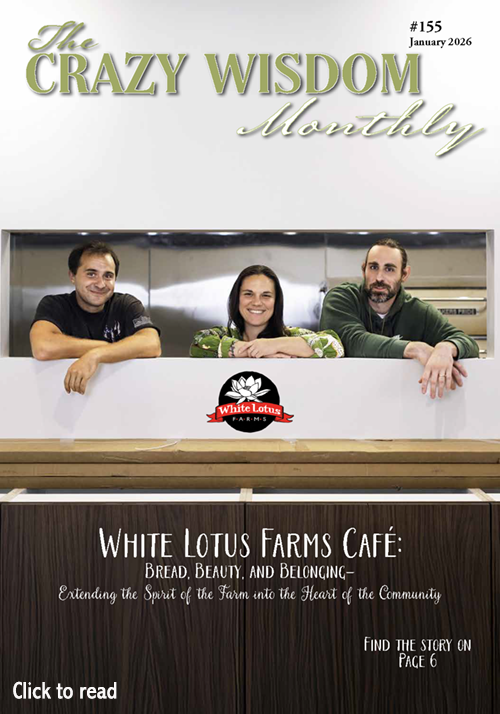By Rachel Portnoy
Generally speaking, my comfort zone is not small. I have lived in foreign countries, trekked in the Himalayas, paraglided off a 5,000 foot cliff, flown in teeny tiny planes over the Amazon rain forest, stood on my head on various mountain tops, and held a giant anaconda around my neck (that one was mostly for the photo op). But when asked to write an article about stepping out of my comfort zone, I immediately knew what I’d share. And it turns out I am not alone in this fear. In fact, it comes in at number two on the list of people’s biggest fears. It is of course, the fear of public speaking (in case you’re interested, fear of death is number one on the list).
But let’s go back in time a bit. I discovered yoga in my late 30s. I didn’t know exactly why I was so drawn to it, but it made me feel better. It took away my aches and pains and helped me feel lighter—both physically and emotionally. Even better, it settled my busy mind. I had trained as a lawyer, worked in non-profits and at the Federal Court house for a few years, but ultimately decided to set aside that part of my life to stay home with my two young sons. The yoga seemed to make me a more patient and loving mother to my boys and partner to my husband. How could this simple activity I participated in a few times a week have so many benefits?
These questions prompted me to embark on a yoga teacher training program at the Center for Yoga with Jonny Kest in the Birmingham/Bloomfield area. It was 2005/2006 and vinyasa yoga was not as ubiquitous as it is now. I was met with doubt and concern by certain family members and yet I felt called in a way I could not ignore. The training program consisted of the study of yoga texts and philosophy, self-reflection through journaling, meditation, asana practice, and of course, learning to teach. That last part interested me the least—mostly because of my fear of public speaking. I had meticulously circumvented it most of my life, clumsily powering through in a state of near shut down when it could not be avoided. I even asked my teacher, Jonny, not to spontaneously call on me during class to practice teach as he did with the other students to avoid my discomfort. And despite his gentle messages that what we avoid is likely what we need the most, he respected my request.
As the training progressed, I told a few friends what I was doing. Apparently, word spread, and people began asking me to teach—mostly in informal settings. At first, I avoided it, consistent with my previous pattern, but eventually I began to say yes. I was terrified, and at first, I’m certain that I was terrible. My heart raced and my voice quivered. My sentences would trail off into a barely audible whisper. I would sometimes forget an entire side or simply go blank. These mistakes were often exacerbated by technical difficulties with playlists and sound systems. But no one ever seemed to notice or at least they didn’t say anything. Instead, they seemed happy to be there and grateful for the class. I kept at it and improved a bit. I began to teach at health clubs and yoga studios. What sustained me during those awkward first few years was the desire to share a practice that helped me so much. A practice that taught me how to connect to my body, to live from my heart and to stay present in the moment through breath. I wanted to share this powerful practice even if it made me profoundly uncomfortable to do so. In retrospect, it makes perfect sense that the practice that reconnected me with myself helped me overcome one of my greatest fears. And the fact that it happened organically, without forcing or pushing through, feels consistent with the practice of yoga itself.
Over the seventeen years that I’ve been teaching vinyasa in the Ann Arbor area, there were days here and there when I felt like a particular class was terrible and I questioned why I was even teaching. It was on those days, without fail, that a student would approach me after class and tell me how wonderful class was and how much my classes helped them through a difficult period in their lives. And I’d be right back on track.
In those early years, I would prepare by writing out my class plan. I would review it and even practice it before teaching. I’d also research and write out a corresponding theme, based on yoga philosophy. When I made a mistake, I was mortified, and I’d ruminate on the mistake for days. These days when I forget a posture or mix up which side we’re on, I let it go and laugh it off. Humans are imperfect, life is imperfect, and the more we embrace that beautiful imperfection, the more loving and compassionate we can be to ourselves and one another.
As time went on, I was able to let go of my notes, and create a class flow on the fly. As more time went on, I could weave in a theme, also with no preparation, but rather based on what my students needed to hear that day. Those classes always feel the most intuitive and profound. Sometimes I don’t even know where the words come from as they appear to flow through me and not from me. I could never have imagined being able speak like that in front of a group when I first entered my teacher training program all those years ago. We learned in that program that the opposite of love isn’t hate, but fear. Sometimes hiding beneath the fear is a power or strength waiting to be cultivated. And when we confront the fear and step out of that comfort zone, we may just discover our true calling—what we truly love to do. I’m so grateful to those students in the early days who suffered through my classes and those who offered encouragement along the way. I can now share my love of this powerful healing practice with grace and ease. And what a lovely journey it’s been.







































































































































































































This is the story of Margot, a recently rescued tuxedo cat, and how she curled up in my heart and broke it open.